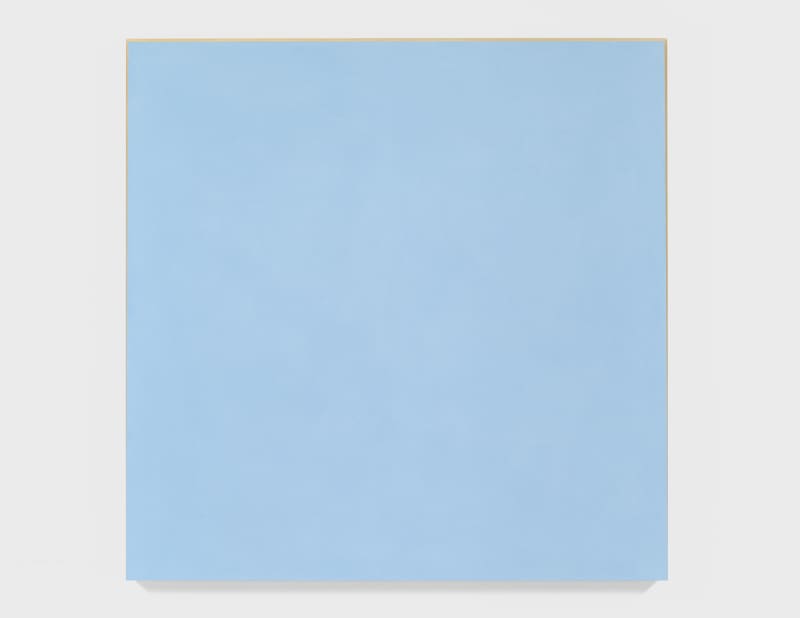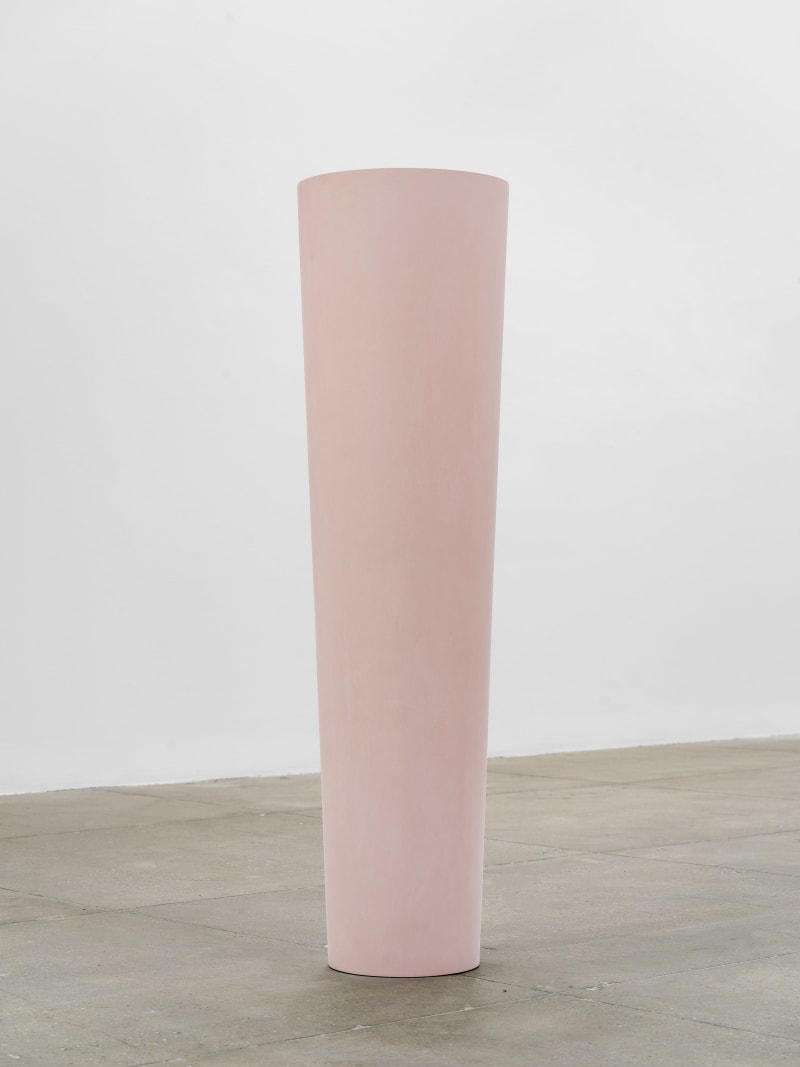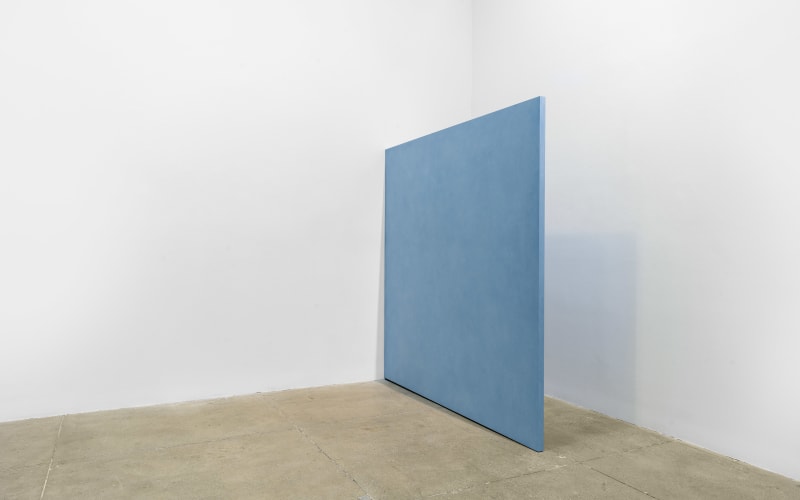Ettore Spalletti
Ettore Spalletti
11 January - 5 March 2022
Marian Goodman Gallery is delighted to announce a solo presentation by Ettore Spalletti (1940-2019), which will bring together significant works from 1978 to 2018. The exhibition, the first presentation of his work in the New York gallery, will be on view from Tuesday, 11 January through Saturday, 5 March.
Download Press Release | Checklist

“Since 1974, Spalletti has been interested in the system of color effects that provoke a series of questions about the rigid order of forms and volumes, shifting attention from the surface of painted images to the painting of surfaces of objects.”
– Germano Celant

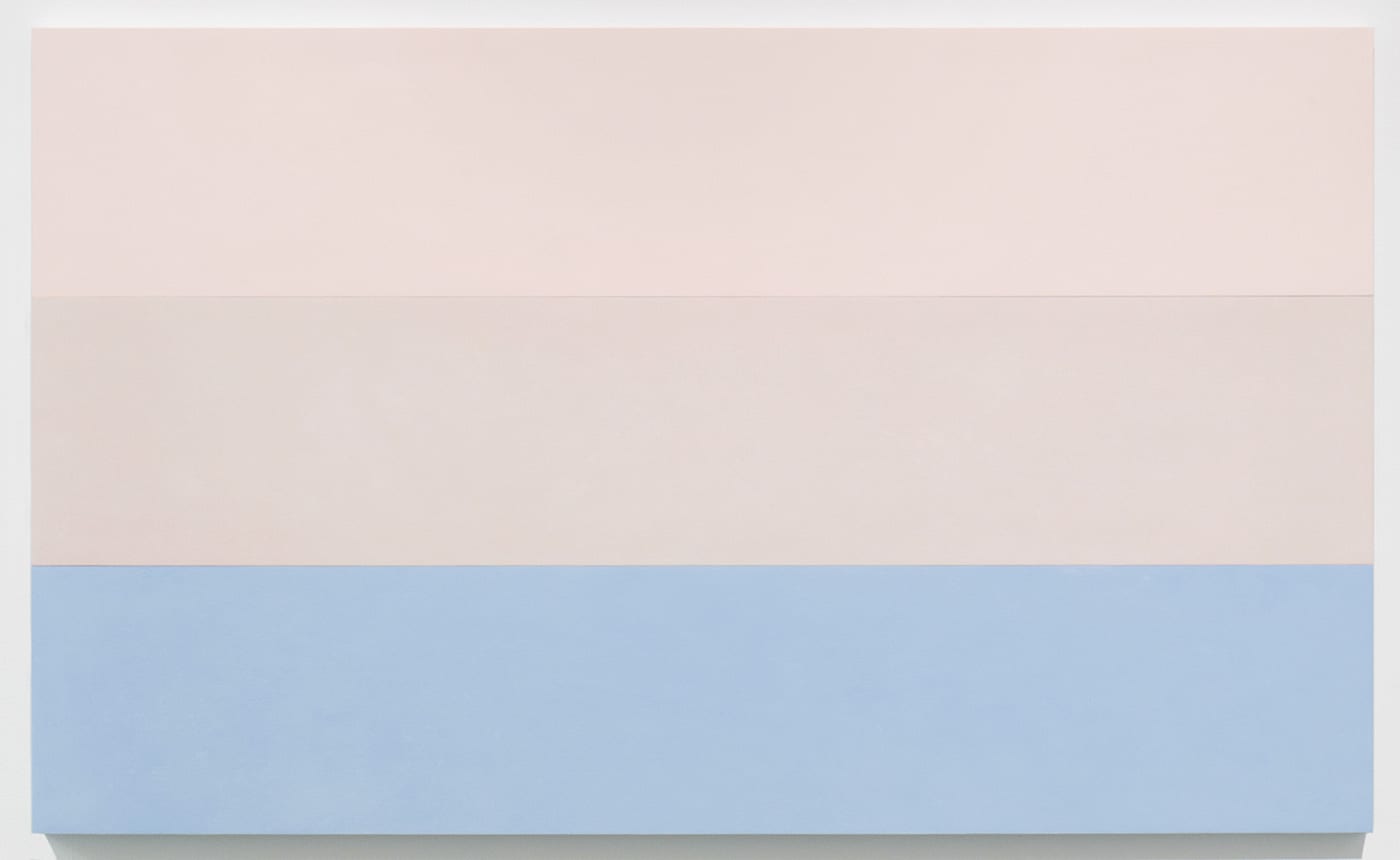
Ettore Spalletti
Paesaggio, 16, 2016
3 elements; color impasto on board
47 1/4 x 78 3/4 x 1 5/8 in. (120 x 200 x 4 cm) (overall)
15 3/4 x 78 3/4 x 1 5/8 in. (40 x 200 x 4 cm) (each)

The exhibition will feature paintings, sculpture and works on paper that trace a path through the themes and preoccupations that drove the artist’s intimate and poetic practice. Moving between mediums, Spalletti explores the threshold between interior and exterior, painting and sculpture, works that open outwards to incorporate nature and architectural space.
The exhibition is a testament to the continued and varied investigations into the use of color and light that Spalletti’s work embodies. For over sixty years, the artist lived and worked in Cappelle sul Tavo, a small town facing the sea in the Abruzzo region of Italy, whose landscape was both the real and spiritual basis for his works.
The artist often described his practice as an attempt to capture light as it moved throughout the day. This sense of presence and quality of attention is an active element of his work, with near monochromes capturing the subtle tonal shifts of the sea and sky which surrounded him.
The landscape motivates his formal register: the artist deploys a restricted palette, working almost exclusively with grey, blue and pink, the colors of the Adriatic Sea. Color, for the artist, is an affective phenomenon which can be entered, transporting the viewer to a different plane, one outside of figuration or abstraction.
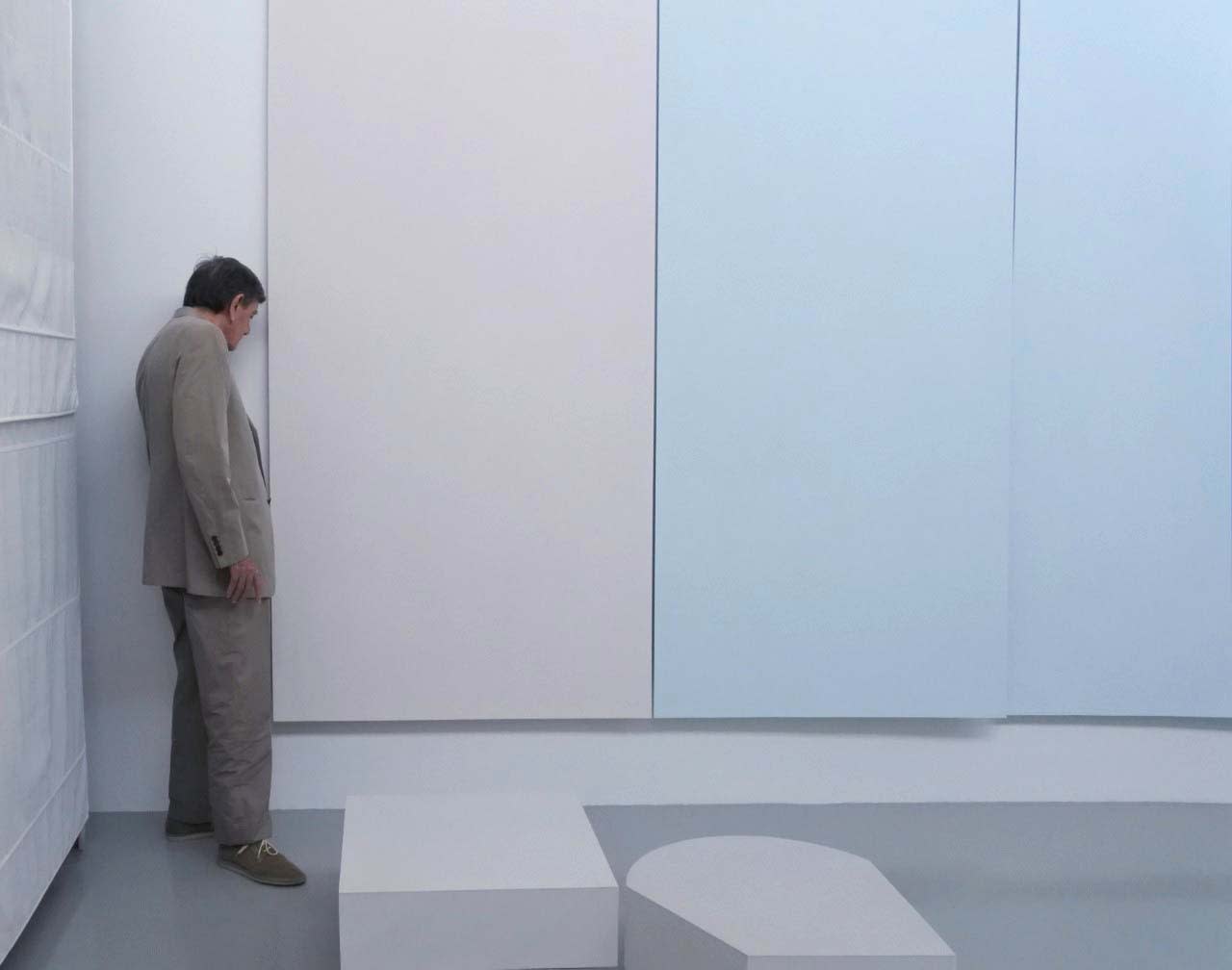
Spalletti examines his work in his studio.
Spalletti’s distinct painting technique was developed in the early 1970s. The artist would create a plaster impasto on which he would layer colored pigments of various intensities onto his planes. From there, he would sand down the accumulated layers through a process of abrasion that provides the luminous, richly textured panels that are his trademark. This temporal process, based on daily, meditative repetition, with the artist adding careful layers over the course of weeks, cannot be understood as simply producing monochrome works. These are works in which color is given dimension; the surface layers are imbued with color inside color, whose pigments break to reveal the white gesso underneath, a reflection of shades of light. It is the intrinsic tension between the surface image and the depth it illuminates which activates Spalletti’s work.
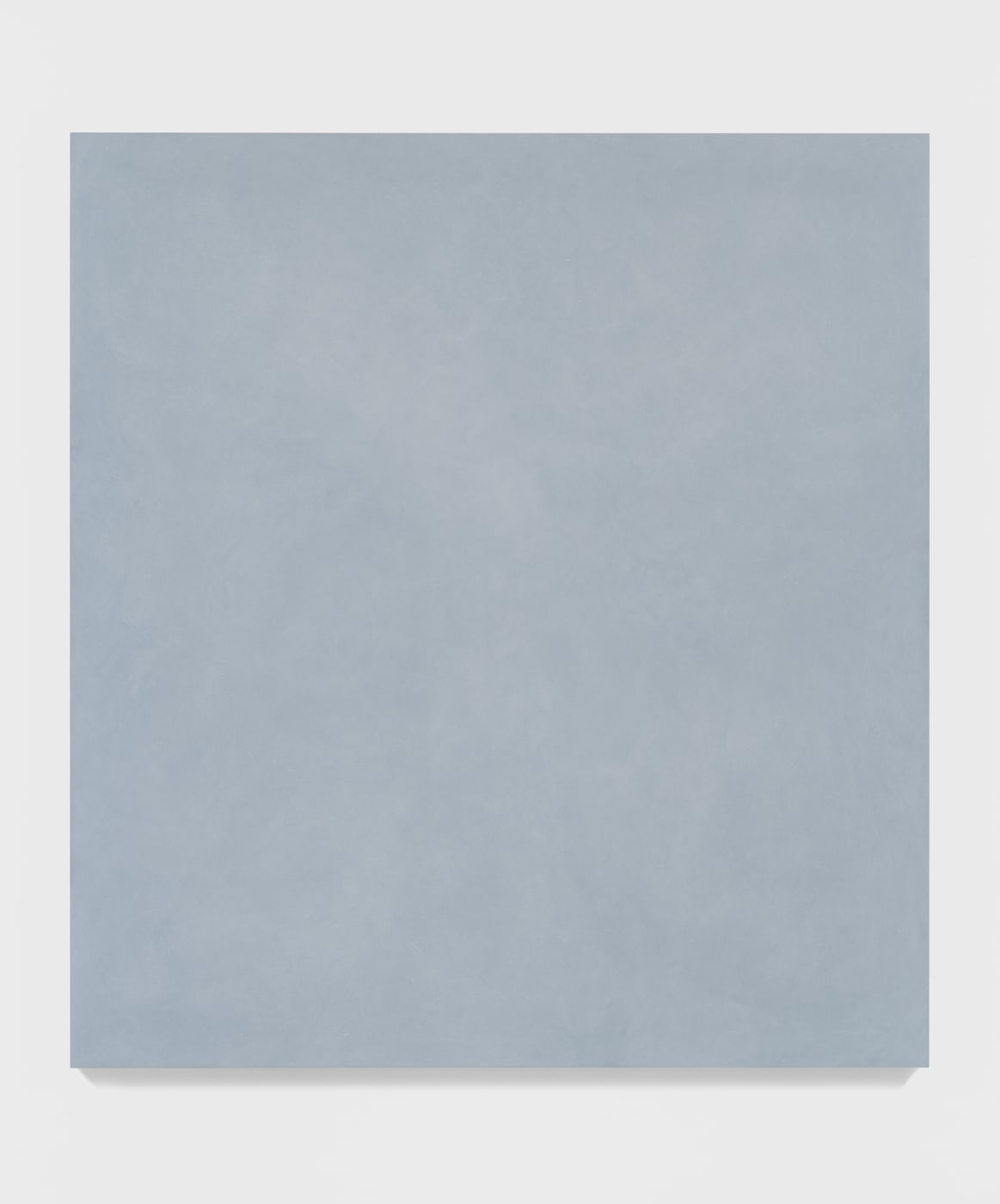
Ettore Spalletti
Parole di colore, grigio verso l'azzurro, 2011
Color impasto on board
94 1/2 x 86 5/8 x 1 5/8 in. (240 x 220 x 4 cm)
(25614)
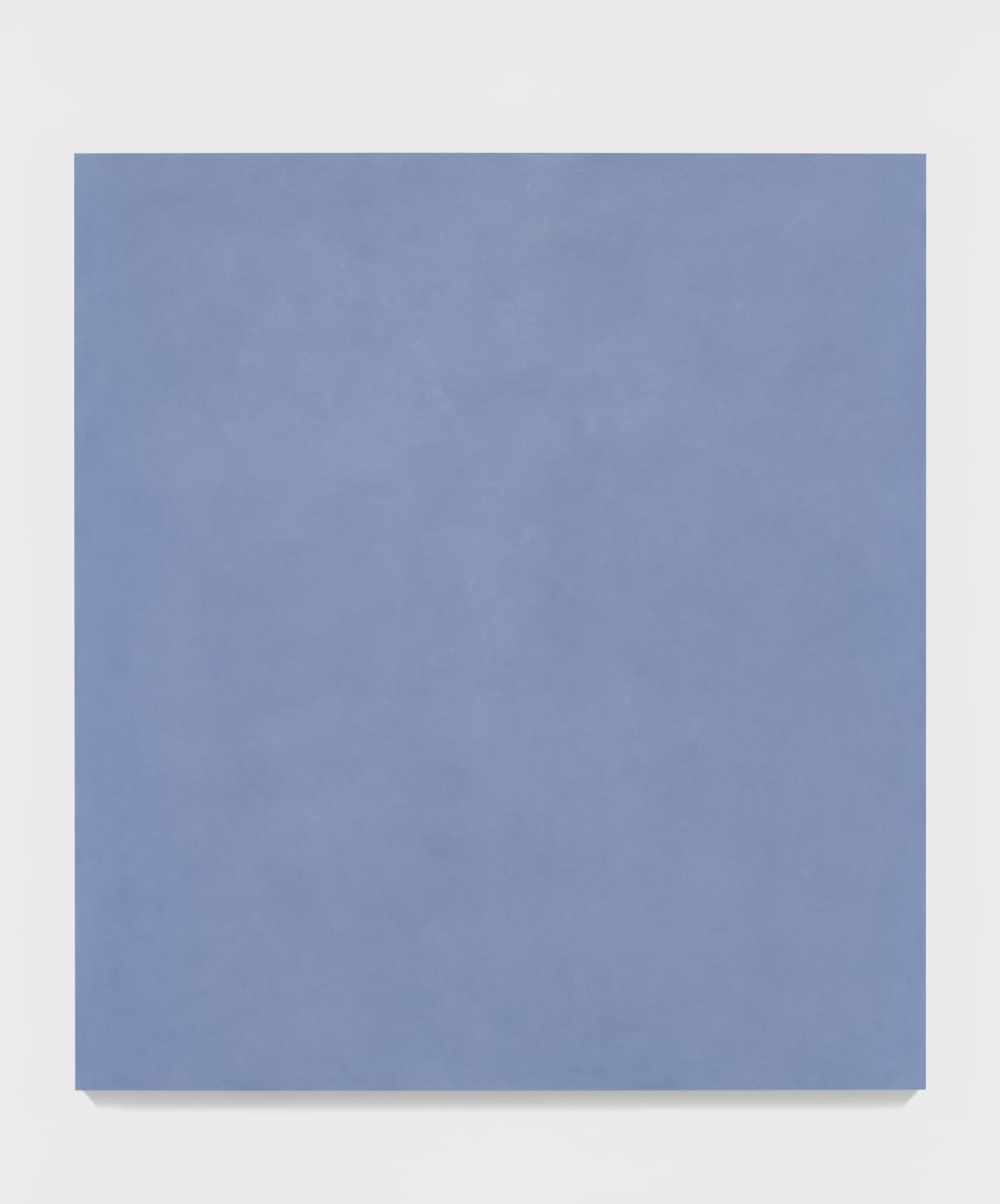
Ettore Spalletti
Parole di colore, rossoazzurro, 2011
Color impasto on board
94 1/2 x 86 5/8 x 1 5/8 in. (240 x 220 x 4 cm)
(25615)

Ettore Spalletti
Parole di colore, grigio, 2011
Color impasto on board
94 1/2 x 86 5/8 x 1 5/8 in. (240 x 220 x 4 cm)
(25616)
In the North Gallery, three works from Spalletti’s Parole di colore (Words of color) investigate the materiality of color as it moves through the spectrum of light blue to slightly blue-shaded grey before reaching full grey. The artist was known to give himself up to “where[ever] the color is taking me.”
“Inside the rooms, the floor, the ceiling, the walls are white. The paintings bestow colour to the whiteness, which then becomes pink in the red room, bluish in the blue room, and so on. The intensity of the light diffuses the pigments inside the space of the room, which becomes a transparent volume of colour. I wanted to have the feeling of being immersed in the colour… My colour gives you another colour, transforming continuously in a sort of colour that has no beginning and no end, stretching itself more and more until it hugs you, wrapping you completely.”
- Ettore Spalletti to Christopher Turner, Apollo Magazine, 2016
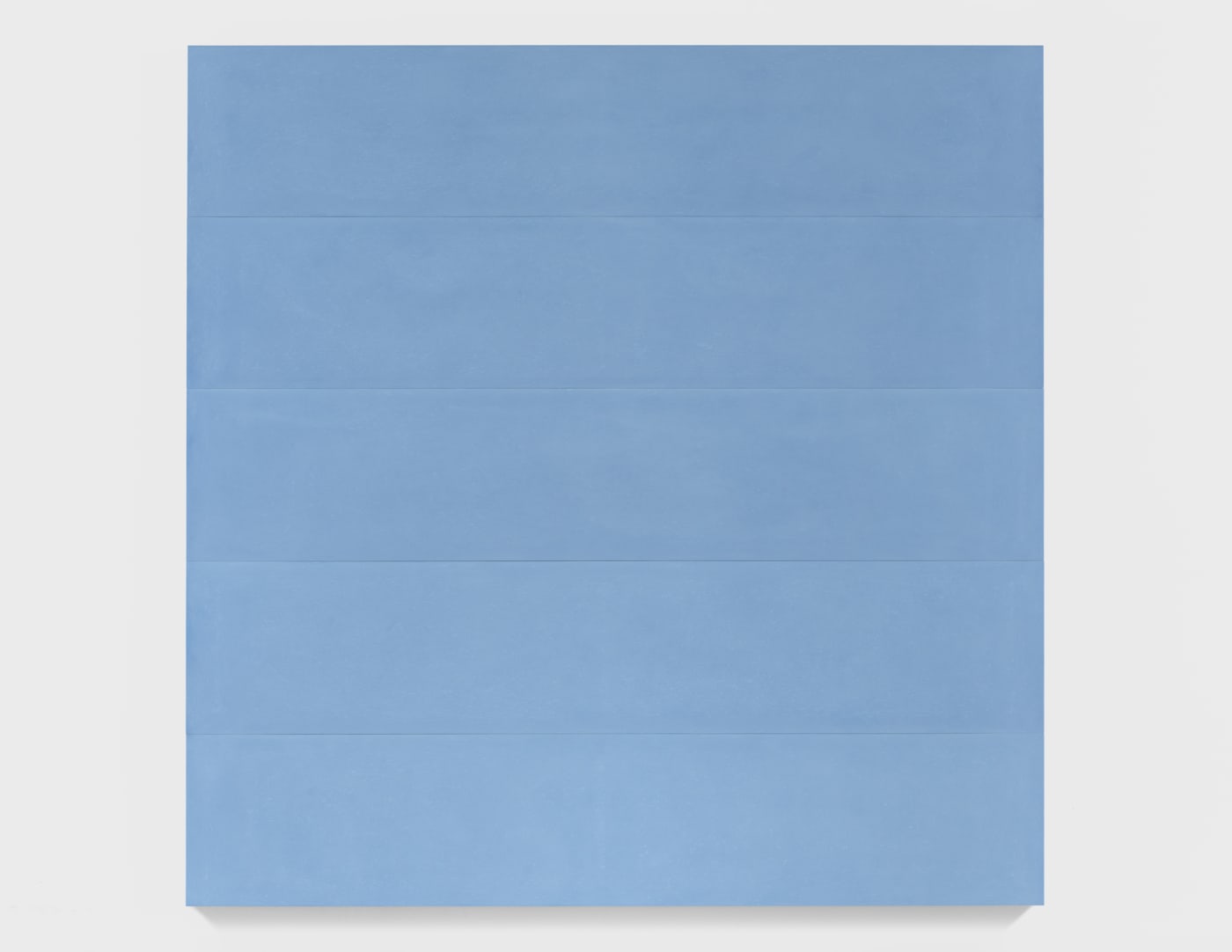
Ettore Spalletti
Sfumato, blu, 2018
Color impasto on board
78 3/4 x 78 3/4 x 1 5/8 in. (200 x 200 x 4 cm)
(21286)

Ettore Spalletti
Blu e oro, paesaggio, 2018
Color impasto and gold leaf on board
78 3/4 x 118 1/8 x 1 5/8 in. (200 x 300 x 4 cm)
(25619)
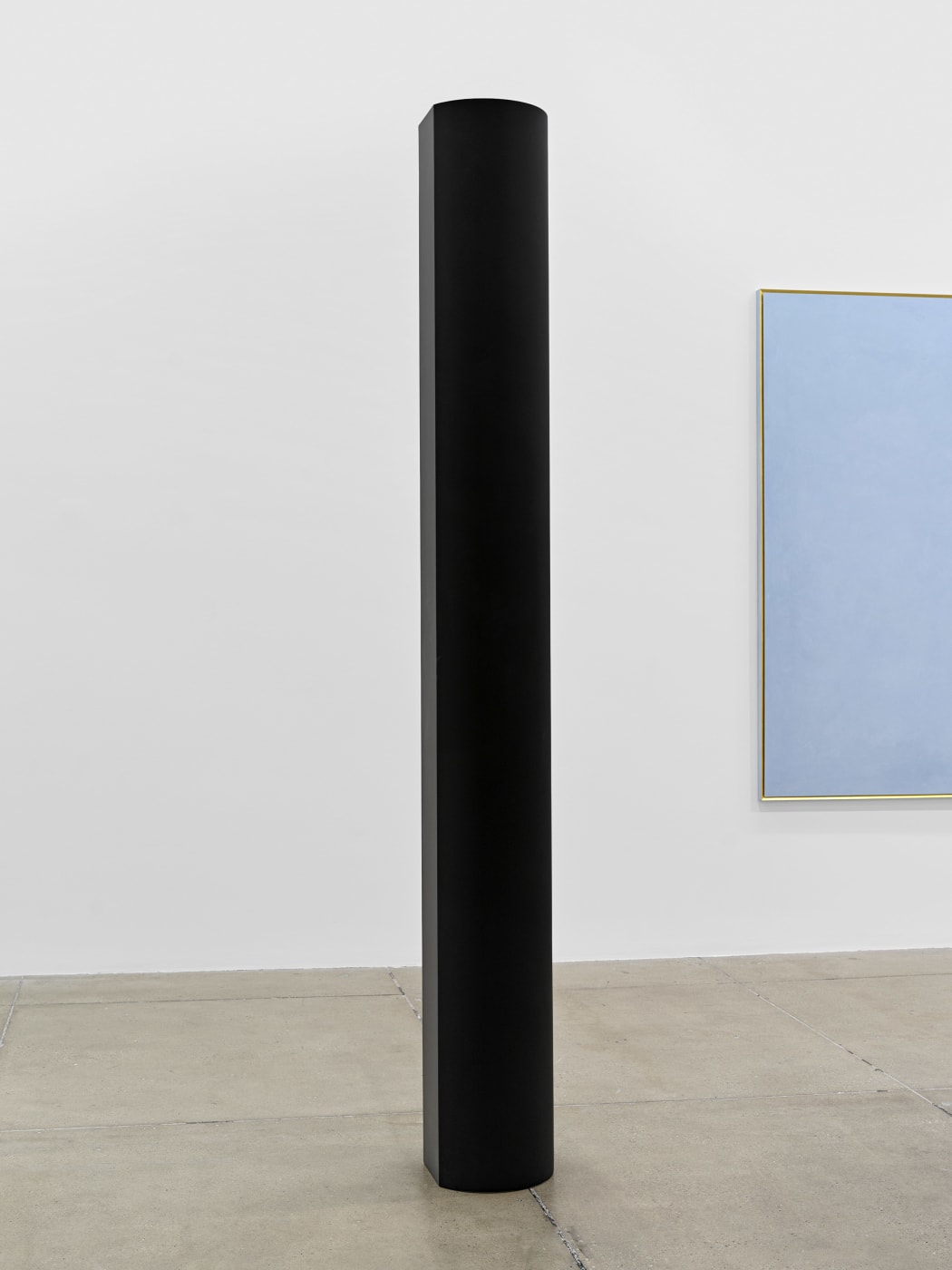
Ettore Spalletti
Colonna persa, nero, 2000
Color impasto on wood
Height: 98 3/8 (250 cm)
Diameter: 12 5/8 in. (32 cm)
(25612)
Existing in dialogue with these works is Sfumato, blu (Shaded blue), 2018, which softens the features of a landscape to create an overall perspective in gradations of blue.
Forming a nexus with these works is Blu e oro, paesaggio, 2018, whose parallel panels of blue and gold suggest horizon lines or “a walk by the sea.”“You see the sand, then the sea, then the blue gets deeper, then there is the skyline and above it the sky.”
Amidst this essence of chromatic intensity and crystallization of light, a sculptural column in black, Colonna persa, nero, 2000, expresses landscape, architecture and exemplarity. The column has been a recurring element within his work since 1978.
On view in the adjacent North Gallery Viewing Room are sixteen pastel powder drawings on paper, made between 2015 and 2016. These graceful, luminous drawings combine the idea of Paesaggi (landscapes) with Sfumato (shaded), and employ an innovative technique invented by Spalletti, in which pastel powder is spread throughout the paper. Initiated at the same time as the Paesaggi series, these works may be understood as preparatory sketches and means of working through ideas of light and space.

94 1/2 x 94 1/2 x 1/8 in. (240 x 240 x 0.3 cm) (overall)
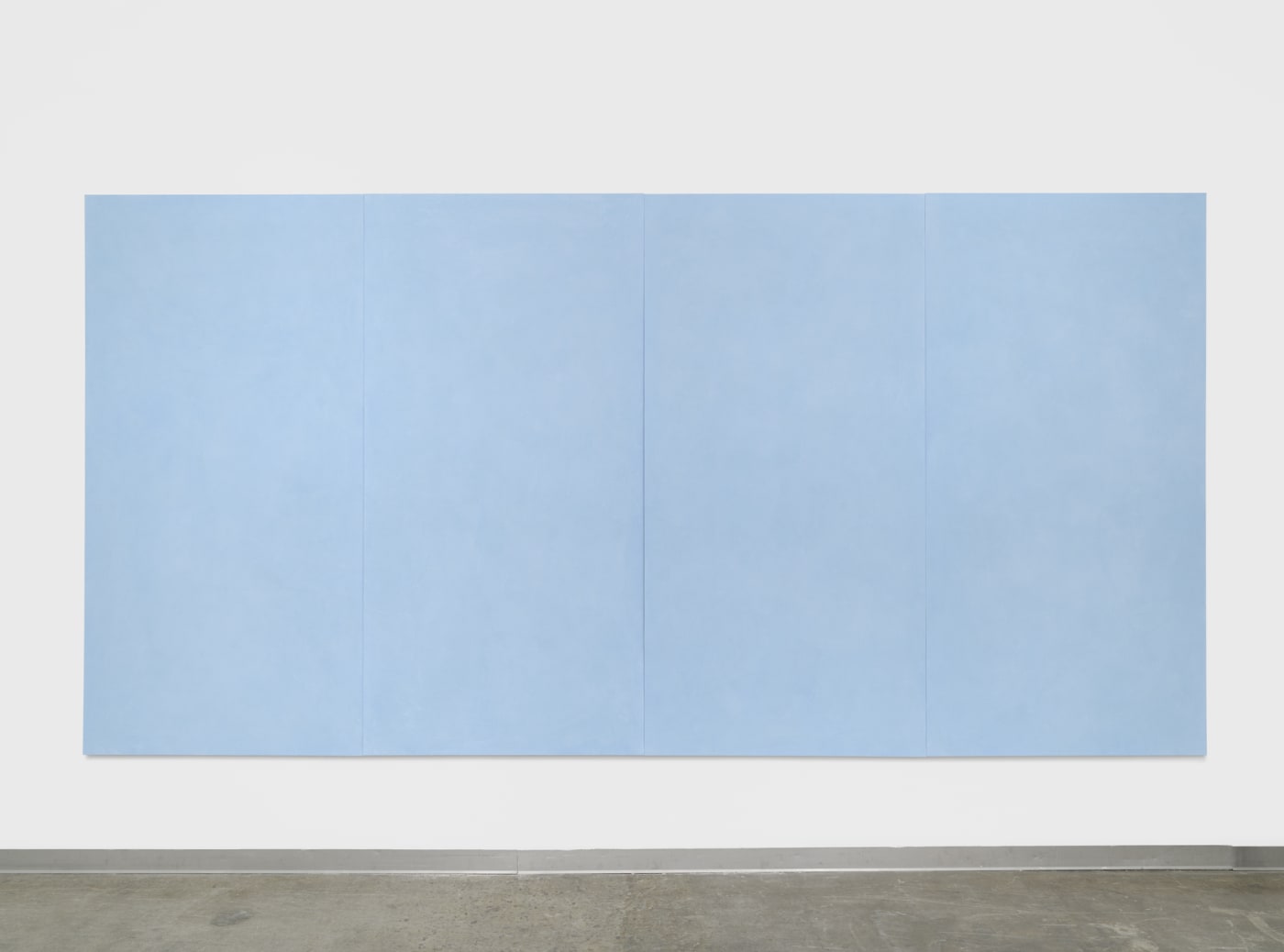
94 1/2 x 189 x 1/8 in. (240 x 480 x 0.3 cm) (overall)
The South Gallery features grounded sculptural works alongside paintings with atmospheric effect. The pure volume Così com'è, fonte, 2006 is a form of a truncated cone — an archetypal shape in Spalletti’s work since Anfora, bacile, vasi (Amphora, basin, vases) in 1982. These iconic and ancient forms and volumes share a relationship with objects that have ‘traversed the whole history of art.’
Presenza stanza 1978/2016 stands upright on the floor, enclosing the corner between two walls and circumscribing volume like an animate being. Conversely Carte rosa, 1998 and Carte di azzurro verso il mare, 1998, are panels painted on both sides. The panels become the architecture of the space, with light and shadow crossing through them at different times of day.
Ettore Spalletti (1940-2019) was born in Cappelle sul Tavo (Pescara) where he spent his whole life. He began his career when Arte Povera was revolutionizing visual culture in Italy and beyond. Spalletti developed a singular, solitary voice and a resultant body of work that exceeds any movement that circumscribes an artist to regional or ideological boundaries. Spalletti's formal vocabulary has always melded and balanced painting and sculpture, form and color, interior and exterior space. Each work is the result of a rigorous process of layering of color at the same time of each day, to capture a specific tone that recalls an hour, a season, and the weather.
Spalletti has been the subject of major international exhibitions over the last 40 years, most recently at the Galleria Nazionale d'arte moderna e contemporanea, Rome, Italy (2021); Nouveau Musee National d Monaco, Monaco, France (2019); Palazzo Cini, Venice (2015) and a retrospective simultaneously presented at three Italian institutions: MADRE - Museo d'Arte Contemporanea Donnaregina, Naples, GAM - Galleria Civica d'Arte Moderna e Contemporanea, Turin, and MAXXI - Museo Nazionale delle Arti del XXI Secolo, Rome (all 2014). Other notable solo exhibitions include GNAM - Galleria Nazionale d'Arte Moderna, Rome (2010); Académie de France, Villa Medici, Rome (2006); the Henry Moore Institute, Leeds (2005); Castello di Rivoli - Museo d'Arte Contemporanea, Rivoli, Turin (2004); Fundación la Caixa, Madrid (2000); Musée d'Art Moderne et Contemporain, Strasbourg (1998); MUHKA - Museum van Hedendaagse Kunst, Antwerp (1995); and Museum Folkwang, Essen (1982).

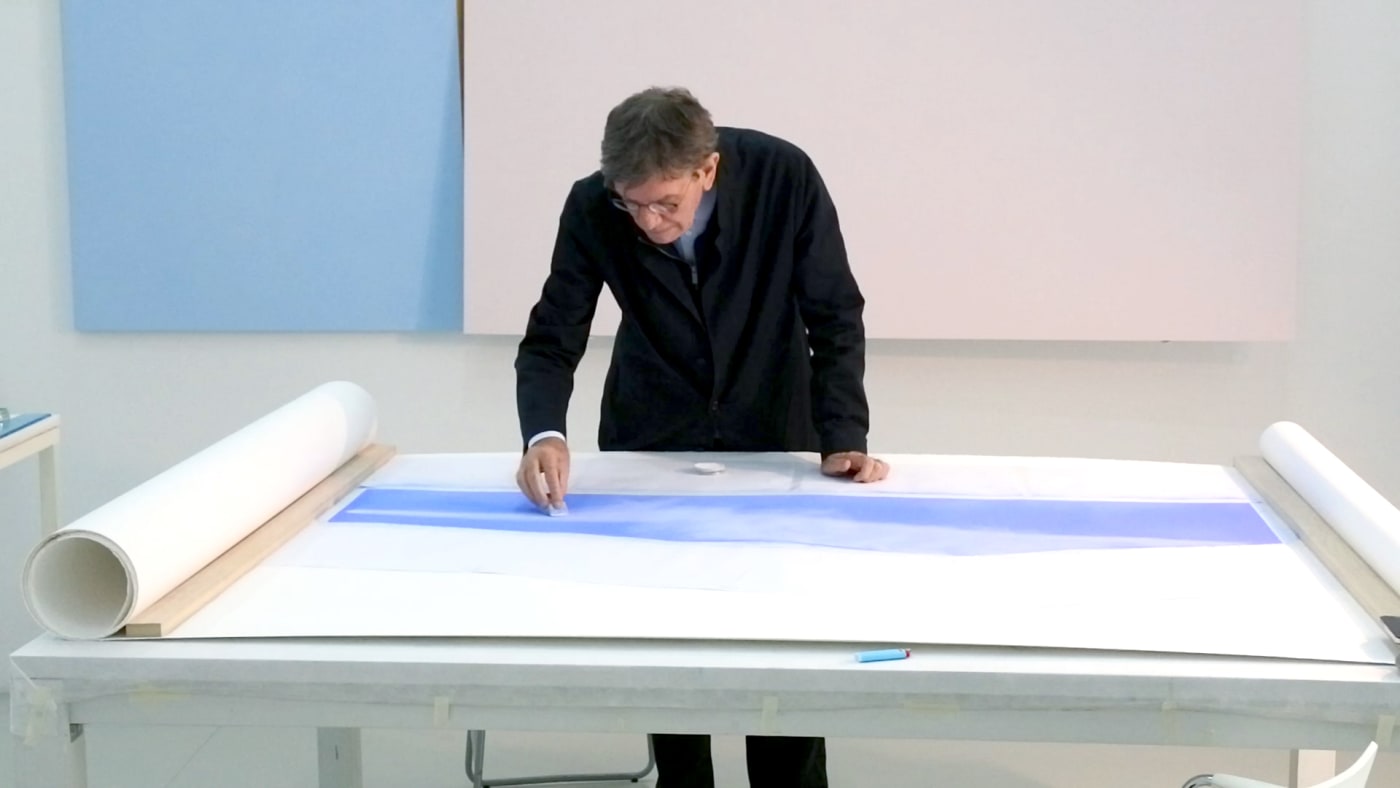

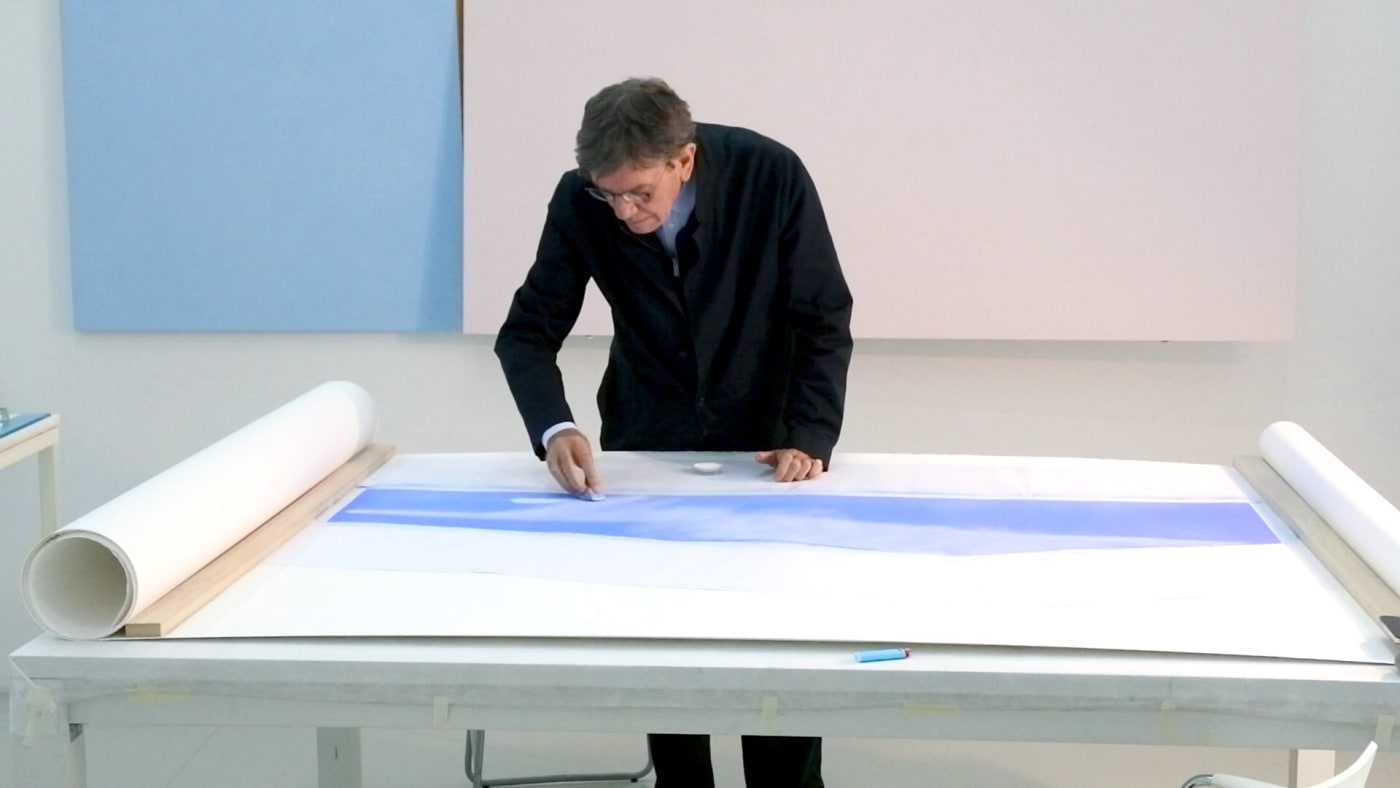
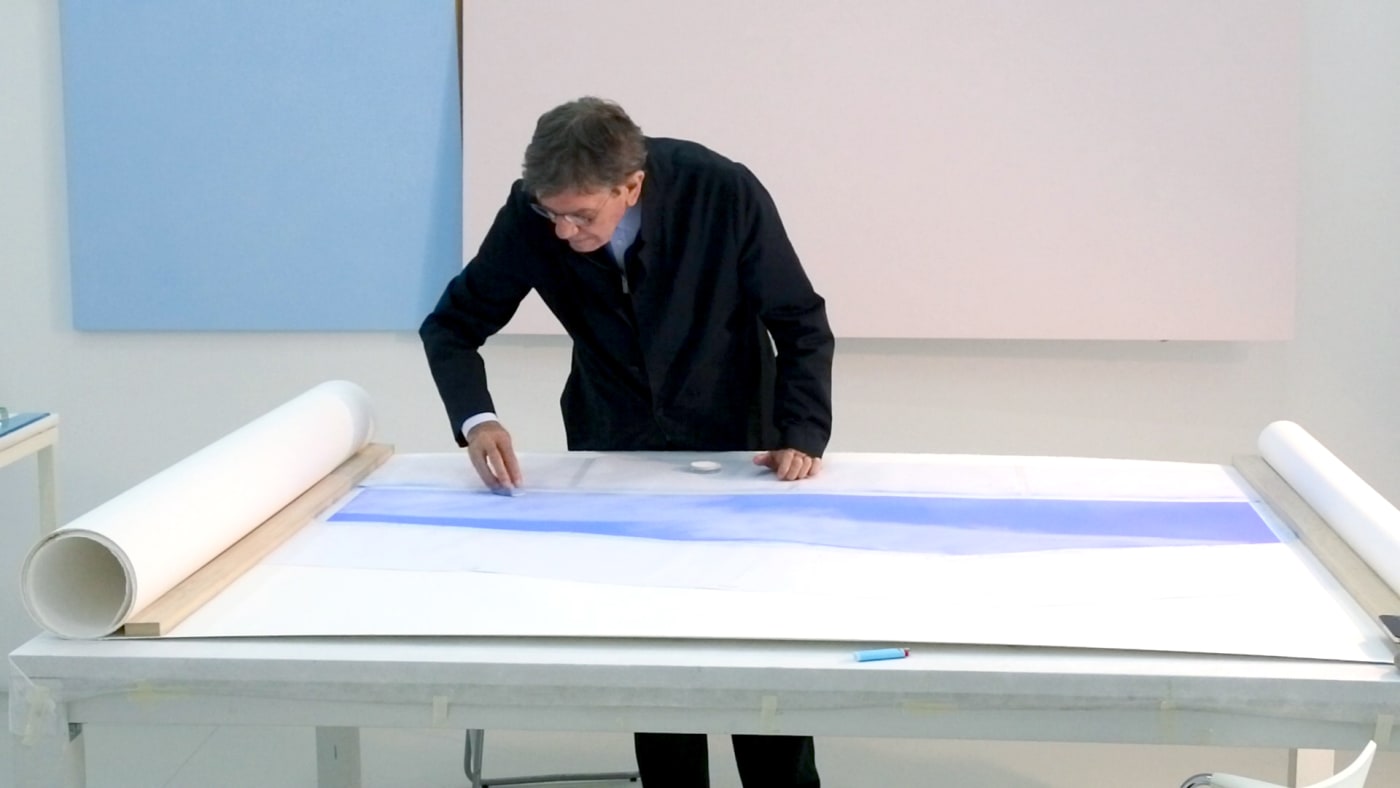
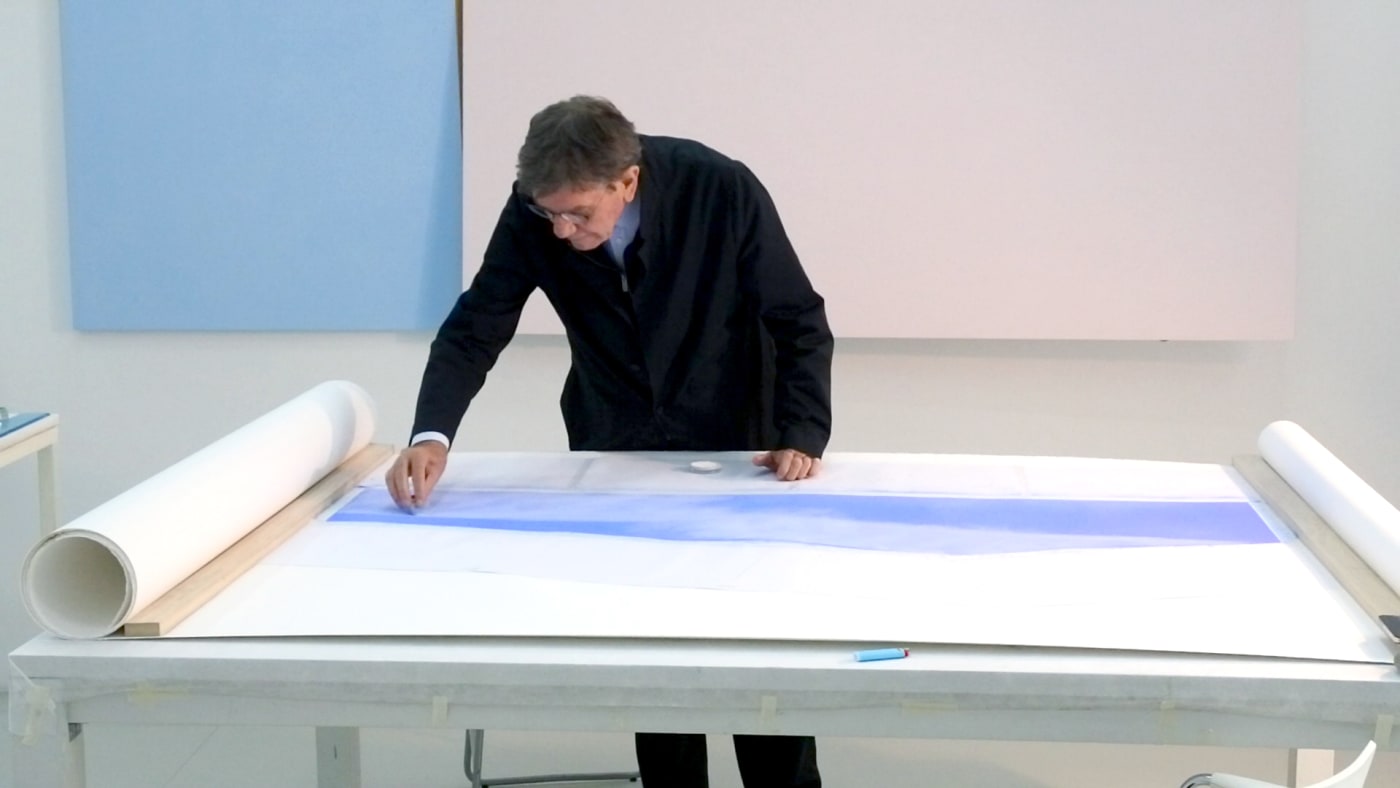
Spalletti has participated in the Venice Biennale (1982, 1993, 1995 and 1997) and documenta VII (1982), documenta IX (1992). In 2010, Spalletti was the recipient of the Terna Prize for Contemporary Art. His major commission works include the chapel at Villa Serena, Pescara, Italy in collaboration with the architect Patrizia Leonelli and La salle des départs at Hospitals Raymond-Poincaré, Garches, France.



